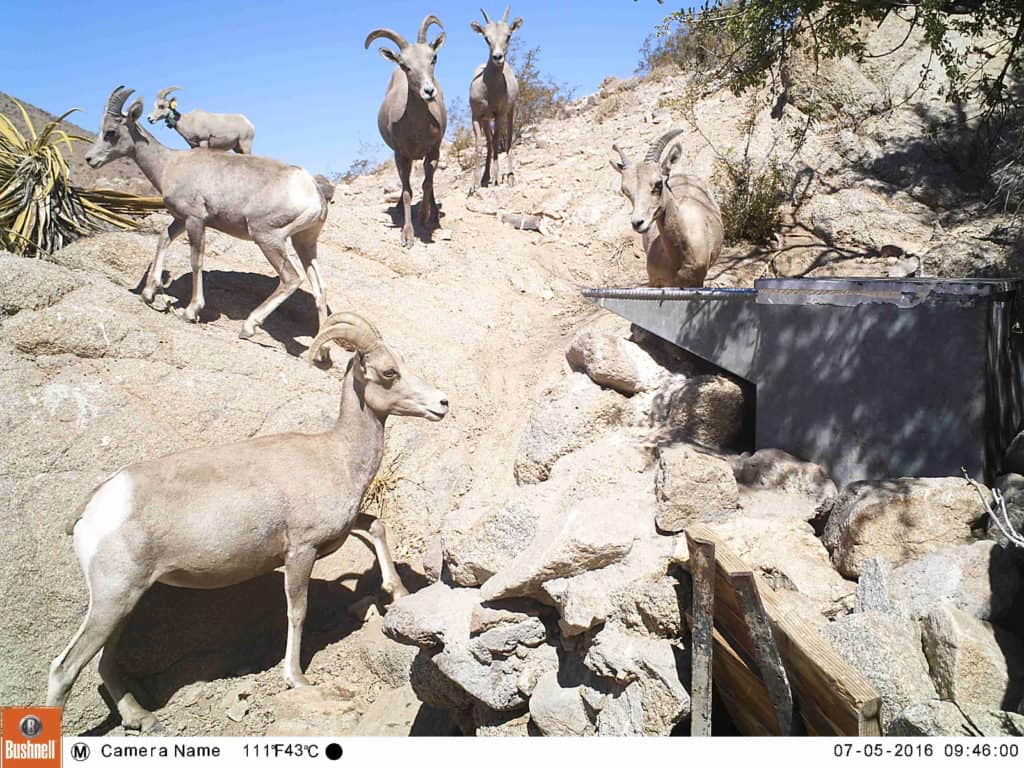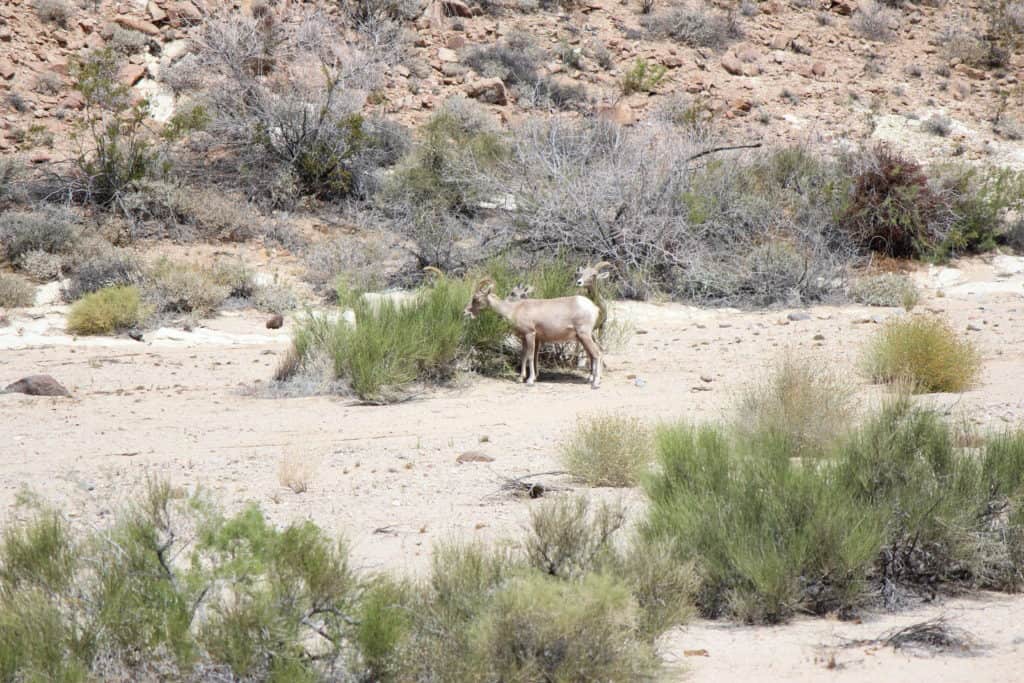Share this article
JWM: Better forage, climate help bighorns after pneumonia outbreak
Population size, habitat quality and weather affect bighorn sheep survival after a pneumonia outbreak, but social distancing may also help them ward off the disease.
Wildlife managers observed the first bighorn sheep (Ovis canadensis) pneumonia outbreak to occur in California’s Mojave Desert in 2013. Researchers tracked the effect of the disease in different regions and under varying weather conditions. Using tracking collars, they monitored 115 sheep from five different populations in the area over a 3.5-year period from 2013 to 2017. They kept track of which animals tested positive for the pathogen Mycoplasma ovipneumoniae at the time of capture and which animals died.
In a study published recently in the Journal of Wildlife Management, the researchers found that 75% of the animals they monitored were positive for Mycoplasma ovipneumoniae antibodies, indicating they contracted the pathogen at some point. While many exposed animals didn’t die from the disease, animals that tested positive for infection at time of capture had lower survival than those that didn’t. They also found that population size played a role in bighorn survival rates.

Water guzzlers may be hot spots for the spread of pneumonia for bighorn sheep as they gather around.
Credit: Daniella Dekelaita
“Larger populations have lower survival overall regardless of infection,” said Daniella Dekelaita, who was a PhD candidate in wildlife science at Oregon State University during the project.
They also compared other factors between the different populations, such as the weather conditions and the availability of vegetation in each area. They found that more rain or snow had a weak negative effect on the survival of sheep.
Sheep populations in areas with better forage vegetation had better survival, the team also found. While only speculation, Dekelaita said it might have helped buffer those sheep that did contract pneumonia.
She also noted that there was a five-year drought in the area during the course of the study, which meant that overall survival might not have been great in general.

Better forage quality resulted in better survival among sheep populations during a pneumonia outbreak. Credit: Daniella Dekelaita
Habitat loss and fragmentation as well as climate change are often emphasized as being major challenges to wildlife management, Dekelaita said. Bighorn sheep management faces the confounding problem of pneumonia as well. The study suggests that bighorn sheep may have lingering effects from infection and could possibly remain infected while becoming asymptomatic. To prevent deaths from the disease, she suggests that wildlife managers might continue testing to assess pathogen prevalence in populations and determine whether selective culling of chronically infected animals might reduce disease spread.
But there may be another possible cause for the spread of pneumonia. Sheep populations in the Mojave Desert have limited natural water sources and rely heavily on human-built water guzzlers, or water troughs left out to support sheep and other wildlife populations. While the researchers didn’t directly examine this possibility, Dekelaita said pneumonia may be more easily spread among the sheep in the Mojave since the sheep concentrate around a limited number of guzzlers.
“These guzzlers are a magnet for these animals,” she said.
If wildlife managers were to build more of these guzzlers so the sheep can spread out more across the landscape instead of crowding together around the handful that exist, it may help them keep their distance from each other, thereby lowering the spread of pneumonia.
This article features research that was published in a TWS peer-reviewed journal. Individual online access to all TWS journal articles is a benefit of membership. Join TWS now to read the latest in wildlife research.
Header Image:
Bighorn sheep populations survive pneumonia outbreaks better with fine weather and forage.
Credit: Daniella Dekelaita








